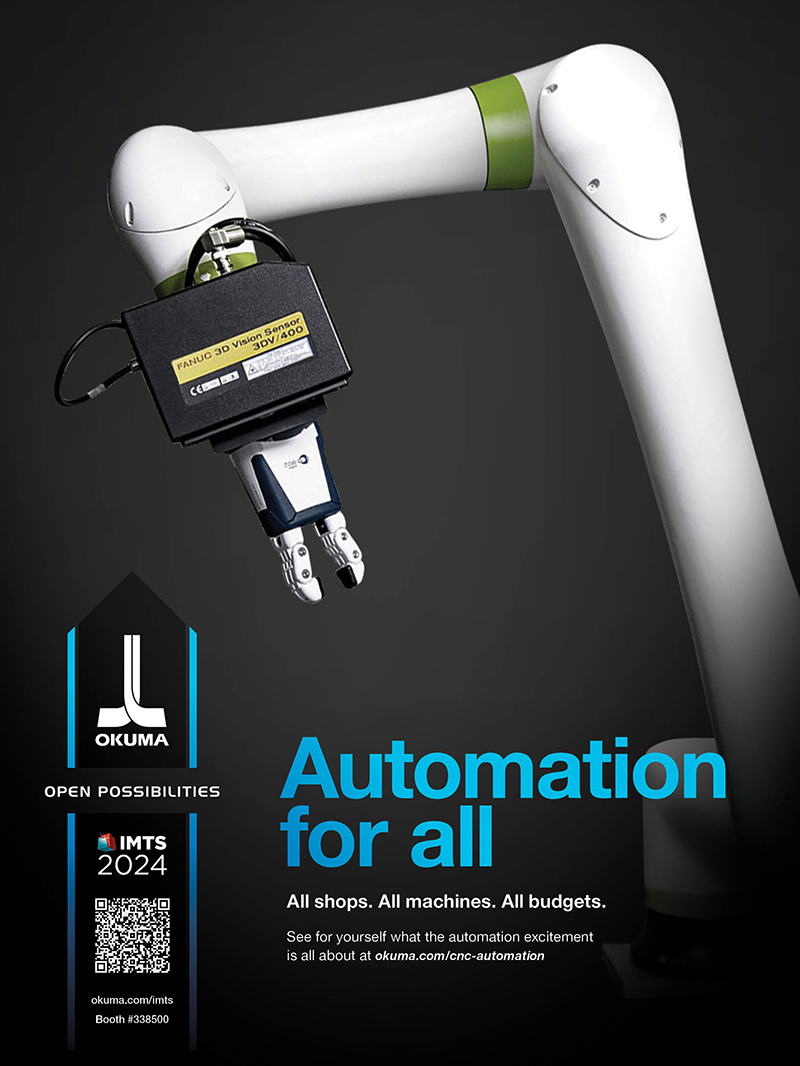The number of farmers in the U.S. peaked in 1910 when one-third of the available workers were dedicated to agriculture. Today, farmers represent about 3% of the workforce, while the average farm has increased from 140 acres in 1910 to more than 400 acres today. The difference behind the shift? Learning to let machines and not people (or animals) do more of the work – all of which reinforces the impact that automation can have on productivity, output, and the freedom to dedicate oneself to more creative and productive endeavors while machines are left to complete tasks independently.
Getting started in a new area or elevating your operation with new technologies can feel daunting and a little intimidating. However, we’ve pulled together a few quick steps to propel you into the adoption of CNC automation.
Step #1: Automation Is an Answer for All Shops — Even Yours
After initially exchanging horses for horsepower and later widespread adoption by automotive manufacturers, automation now spans various industries and is a good fit for shops of all sizes. Early systems were labor-intensive, requiring dedicated programmers and multiple technicians. Today, AI and machine learning simplify the process, making automation more accessible. From simple bar feeders to complex flexible manufacturing systems (FMS), automation can offer both cost-effective plug-and-play and customizable solutions for every shop.
Step #2: Identify Your Operational Baseline
Establish your baseline processes and productivity levels before introducing automation. Know the cost of making parts and rates of your current CNC machine spindle utilization. Understanding your benchmarks helps identify areas where automation can improve cost, time, and labor efficiency. Start by fixing the most obvious problems. Track data, see improvements, and pinpoint additional areas for optimization with CNC automation. Here’s how we can help.
Step #3: Lean on Automation Experts
At Okuma, we support your shop throughout the automation journey. With decades of experience and a robust network of third-party support available through our Partners in Technology, we offer seamless integration of automation tools and can help you chart how these options might match with and enhance the value of your current lineup of Okuma machine tools. Additionally, our recently launched business division – Okuma Factory Automation – provides a range of OEM and partnered solutions, including automated material loading and unloading systems, machine tending and industrial robotics, automated workpiece pallet changers, FMS, and smart manufacturing systems.
Step #4: Define Short- and Long-Term Goals
Automation can boost throughput, yield, and productivity. Clearly define your shop's goals to determine the type and placement of automation. Develop metrics and KPIs to assess the success of your automation strategy. Consider areas like throughput, cycle time, quality, and labor utilization (for example, increasing spindle utilization from 50% to 75% or reducing cycle time by 20%).
Step #5: Prepare Your Team
Automation changes shop operations, affecting employees and the machines on the floor. Rely on input from operators and programmers early in the planning and implementation processes; their input is crucial for identifying where automation is most needed and assessing readiness. Provide necessary training to ensure they adapt smoothly to new roles and responsibilities.
Step #6: Map Your Shop’s Automation Path
It’s time to create a roadmap for automation. Start small and gradually scale up – automation solutions vary in complexity, cost, and compatibility, and even minor automation steps can yield significant results over time. Prioritize the most impactful areas for initial automation efforts.
Others have grappled with the same or similar questions you have, so there are tried, tested, and trusted resources available to help you through the process. Contact your local Okuma distributor and seek advice from peers, local distributors, and vendors. Push for detailed information like time studies, simulations, and cost analyses. Involve experts in the selection process to ensure the chosen system aligns with your shop's needs. Remember, it’s a marathon, not a sprint.
More Information
www.okuma.com/cnc-automation


Explore the August 2024 Issue
Check out more from this issue and find your next story to read.
Latest from Aerospace Manufacturing and Design
- Piasecki acquires Kaman's KARGO UAV program
- PI Americas’ long-travel XY piezo nanopositioners-scanners
- AAMI project call submission deadline extended to May 12
- Jergens launches cast iron tooling column additions
- Airbus to acquire assets relating to its aircraft production from Spirit AeroSystems
- FANUC America's Cobot and Go web tool
- Chicago Innovation Days 2025: Shaping the future of manufacturing
- High-density DC/DC converters for mission-critical applications





